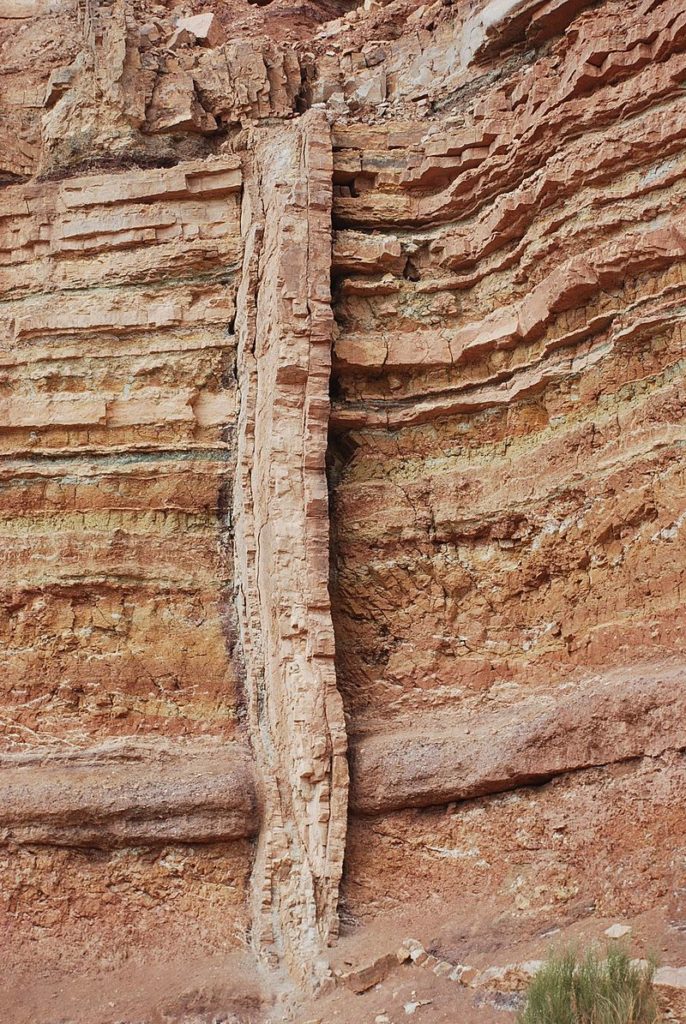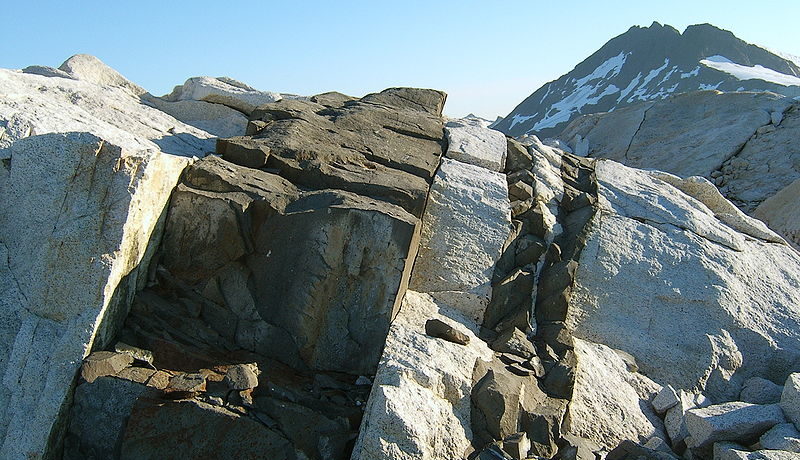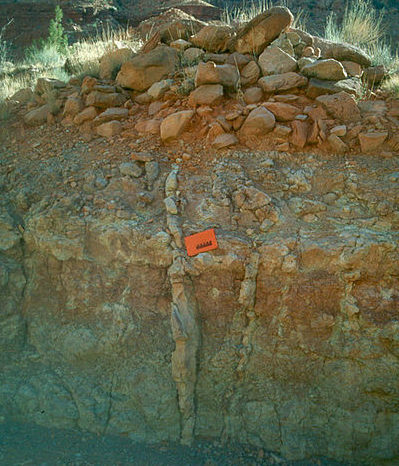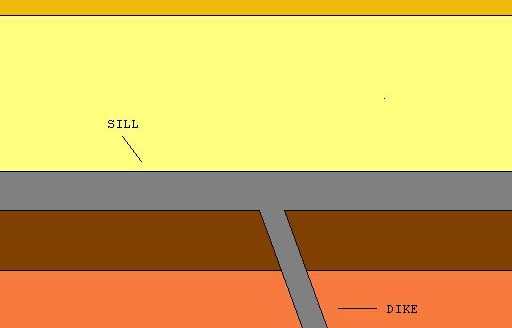75 Dikes and Sills
Dikes
A dike is a sheet of rock that formed in a fracture in a pre-existing rock body when magma intrudes into a crack then crystallizes as a sheet intrusion, either cutting across layers of rock or through an unlayered mass of rock. Therefore it is called discordant structure. A dike is always younger than the rocks that contain it. Dikes are usually high-angle to near-vertical in orientation, but subsequent tectonic deformation may rotate the sequence of strata through which the dike propagates so that the dike becomes horizontal.

Sometimes dikes appear in swarms, consisting of several to hundreds of dikes emplaced more or less contemporaneously during a single intrusive event. The world’s largest dike swarm is the Mackenzie dike swarm in the Northwest Territories, Canada.[2]
Dikes often form as either radial or concentric swarms around plutonic intrusives, volcanic necks or feeder vents in volcanic cones. The latter are known as ring dikes.
Dikes can vary in texture and their composition can range from diabase or basaltic to granitic or rhyolitic, but on a global perspective the basaltic composition prevails, manifesting ascent of vast volumes of mantle-derived magmas through fractured lithosphere throughout Earth history. Pegmatite dikes comprise extremely coarse crystalline granitic rocks—often associated with late-stage granite intrusions or metamorphic segregations. Aplite dikes are fine-grained or sugary-textured intrusives of granitic composition.

Sills
In geology, a sill is a tabular sheet intrusion that has intruded between older layers of sedimentary rock, beds of volcanic lava or tuff, or even along the direction of foliation in metamorphic rock. The term sill is synonymous with concordant intrusive sheet, or just concordant structure. This means that the sill does not cut across preexisting rocks, in contrast to dikes, discordant intrusive sheets which do cut across older rocks. Sills are fed by dikes, except in unusual locations where they form in nearly vertical beds attached directly to a magma source. The rocks must be brittle and fracture to create the planes along which the magma intrudes the parent rock bodies, whether this occurs along preexisting planes between sedimentary or volcanic beds or weakened planes related to foliation in metamorphic rock. These planes or weakened areas allow the intrusion of a thin sheet-like body of magma paralleling the existing bedding planes, concordant fracture zone, or foliations.


Associated Ore Deposits

Figure 5. Mid-Carboniferous dolerite sill cutting Lower Carboniferous shales and sandstones, Horton Bluff, Minas Basin South Shore, Nova Scotia
Certain layered intrusions are a variety of sill that often contain important ore deposits. Precambrian examples include the Bushveld, Insizwa and the Great Dyke complexes of southern Africa, the Duluth intrusive complex of the Superior District, and the Stillwater igneous complex of the United States. Phanerozoic examples are usually smaller and include the Rùm peridotite complex of Scotland and the Skaergaard igneous complex of east Greenland. These intrusions often contain concentrations of gold, platinum, chromium and other rare elements.
- Pilkington, “Mark and Walter R. Roest; Removing varying directional trends in aeromagnetic data, Geophysics, vol. 63 no. 2 (1998), pp. 446-453. abstract” ↵
- Pilkington, “Mark and Walter R. Roest; Removing varying directional trends in aeromagnetic data, Geophysics, vol. 63 no. 2 (1998), pp. 446–453. abstract” ↵
